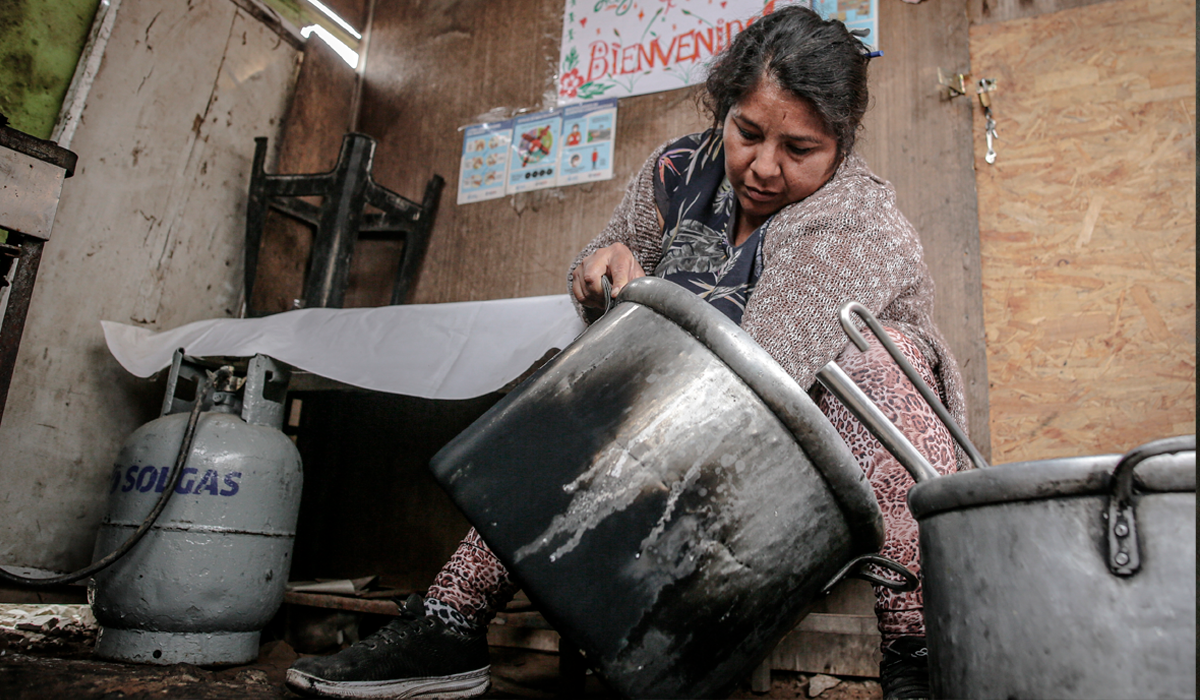
A tangible effect of the 0.6% drop in the Peruvian economy in 2023 was that 29% of the population was in a situation of monetary poverty —close to 10 million people— but now, in the first year of Dina Boluarte’s government, it also represented an increase in the lack of access to food for just over half of Peruvians.
According to figures from the Food and Agriculture Organization of the United Nations (FAO): 51.7% of the population suffered from moderate or severe food insecurity between 2021 and 2023, some 17.6 million compatriots. Less than ten years ago—in the three-year period 2014-2016—the food insecurity rate was 37.2% (11.4 million inhabitants).
What is meant by food insecurity? Moderate food insecurity refers to a person who does not have enough money or resources to maintain a healthy diet, is also concerned about their ability to obtain food and has probably skipped a meal or gone without food occasionally, according to the criteria of the FAO FIES survey.
While, Severe food insecurity—which rose from 13.5% to 20.7% of Peruvians, that is, more than 6.8 million people—warns that a person has run out of food and has gone without eating for one or more days during a year. “It is more likely that he or she has suffered from hunger,” the UN bloc summarises.
“FAO measures the average of the last three years. And, in the previous data for the three-year period up to 2021, it was 50.5%. Now food insecurity is much higher than 10 years ago,” The IEP researcher added to La República, Carolina Trivelli.
Another slap on the wrist
Jessica Huamanspokesperson for the Peruvian Food Security Platform, points out that the increase in monetary poverty explains why more Peruvians cannot afford their food and are going hungry, as well as food inflation, climate change and the political and economic crisis that translates into food shortages.
“Almost two million Peruvians would not have the possibility of accessing the basic food basket, which costs around 251 soles,” he added.
During the study period, it was shown that 11.5 million Peruvians cannot afford a healthy diet, as the cost rose from US$3.28 to US$4.00 between 2022 and 2023.
Huamán recalled that the most vulnerable population lacks access to meat, fruits and vegetables precisely because of their high prices, and here the common pots, being unprotected and with barely S/2.20 per serving, can do little to help.
It should be noted that food inflation reached a peak of 11.02% in mid-2023 – almost doubling the general inflation at that time – to the point that some products rose by more than 70%, according to the INEI. It is currently 1.4% but specialists have already explained on more than one occasion that this only slows down the rate at which goods are rising in price. An inauspicious impact for households, considering that precarious employment prevails and incomes continue to decline.
The FAO report shows that the level of food insecurity in Latin America and the Caribbean has slightly decreased from 31.4% to 28.2%, although Peru has followed the opposite path.
“The world is in bad shape, Latin America and the Caribbean is the only region with a positive trend, but Peru is going against the current and its food situation continues to worsen”said Trivelli, who insisted that the message to the nation that President Dina Boluarte will give on July 28, prioritize fighting food insecurity and hunger.
Source: Larepublica
Alia is a professional author and journalist, working at 247 news agency. She writes on various topics from economy news to general interest pieces, providing readers with relevant and informative content. With years of experience, she brings a unique perspective and in-depth analysis to her work.











